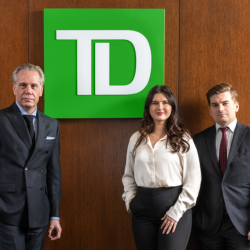Our approach to building investment portfolios is based on the following core convictions:
- We invest in our highest persuasion ideas for each asset class;
- We are committed to long term valuable companies at attractive prices;
- We believe that alternative investments should be a part of every portfolio.

Discretionary Portfolios
We follow a hybrid approach combining both top-down and bottom-up framework analysis to portfolios construction.
i. We examine various economic factors that may affect the overall market, various sectors and industries, as well as performance and opportunities at a geographical level. This analysis will define our active asset allocation and sector rotation.
Our portfolios consist of the following asset classes:
ii. In the bottom-up selection process, we will closely examine the fundamentals of companies based on past performance, financial statements and if they are poised to benefit from long term socioeconomic trends. We also want those to have a solid management team, attractive valuation matrix and a high quality of earnings. Further, in order to mitigate volatility and to ensure appropriate diversification, we include an allocation to alternative investments that have shown a low correlation to overall market performance. We believe adding this element to be of great importance, particularly in the current market environment.
i. We examine various economic factors that may affect the overall market, various sectors and industries, as well as performance and opportunities at a geographical level. This analysis will define our active asset allocation and sector rotation.
Our portfolios consist of the following asset classes:
- American Equities;
- Canadian Equities;
- Foreign Equities;
- Fixed Income;
- Alternative investments (Infrastructure, Private Equity, Private Lending, etc.).
ii. In the bottom-up selection process, we will closely examine the fundamentals of companies based on past performance, financial statements and if they are poised to benefit from long term socioeconomic trends. We also want those to have a solid management team, attractive valuation matrix and a high quality of earnings. Further, in order to mitigate volatility and to ensure appropriate diversification, we include an allocation to alternative investments that have shown a low correlation to overall market performance. We believe adding this element to be of great importance, particularly in the current market environment.

Investing responsibly doesn’t have to come at the expense of performance.
We can help you meet your wealth-building goals in a socially responsible and environmentally sustainable way.
What is ESG investing?
Also known as sustainable investing, it is an approach to investing that incorporates Environmental, Social and Corporate Governance issues in the investment process. It’s a forward-looking process that often combines selecting companies based on their financial prospects, how they manage various ESG issues, and the impact they may have on society and the environment. Sustainable investing can help investors achieve their financial goals, while aligning their investments with their values.
Environmental, Social & Governance screening - We follow a two-dimensional ESG screening process:
What is ESG investing?
Also known as sustainable investing, it is an approach to investing that incorporates Environmental, Social and Corporate Governance issues in the investment process. It’s a forward-looking process that often combines selecting companies based on their financial prospects, how they manage various ESG issues, and the impact they may have on society and the environment. Sustainable investing can help investors achieve their financial goals, while aligning their investments with their values.
Environmental, Social & Governance screening - We follow a two-dimensional ESG screening process:
- Negative screening, which means eliminating from consideration all companies that fail to meet our stringent ESG criteria.
- Positive screening means actively seeking out companies with a strong commitment to high ESG standards. This involves screening based on the seven ESG criteria outlined above as well as the United Nations’ Sustainable Development Goals (UN SDGs).

Alternative solutions
Over the past decade, the financial environment has created a challenging landscape for investors. Many of the investment strategies that have worked so well for the past thirty years are less likely to be effective going forward.
The key risk is that portfolio returns result in a shortfall. Fixed income products, equity markets have become increasingly volatile, and global financial issues are numerous and highly interconnected. In this new environment, traditional 60/40 portfolios and traditional market benchmark indices are becoming less and less relevant as most investors’ objectives involve absolute return requirements, while ignoring relative performance.
It is important to recognize that, while traditional asset-class diversification strategies may help investors reduce volatility in normal market conditions; they generally struggle during extreme events, when asset-class correlations increase. These correlations increase due in large part to the fact that inside every asset class and security are multiple shared risk factors, which can be thought of as the DNA of a portfolio.
The key risk is that portfolio returns result in a shortfall. Fixed income products, equity markets have become increasingly volatile, and global financial issues are numerous and highly interconnected. In this new environment, traditional 60/40 portfolios and traditional market benchmark indices are becoming less and less relevant as most investors’ objectives involve absolute return requirements, while ignoring relative performance.
It is important to recognize that, while traditional asset-class diversification strategies may help investors reduce volatility in normal market conditions; they generally struggle during extreme events, when asset-class correlations increase. These correlations increase due in large part to the fact that inside every asset class and security are multiple shared risk factors, which can be thought of as the DNA of a portfolio.


